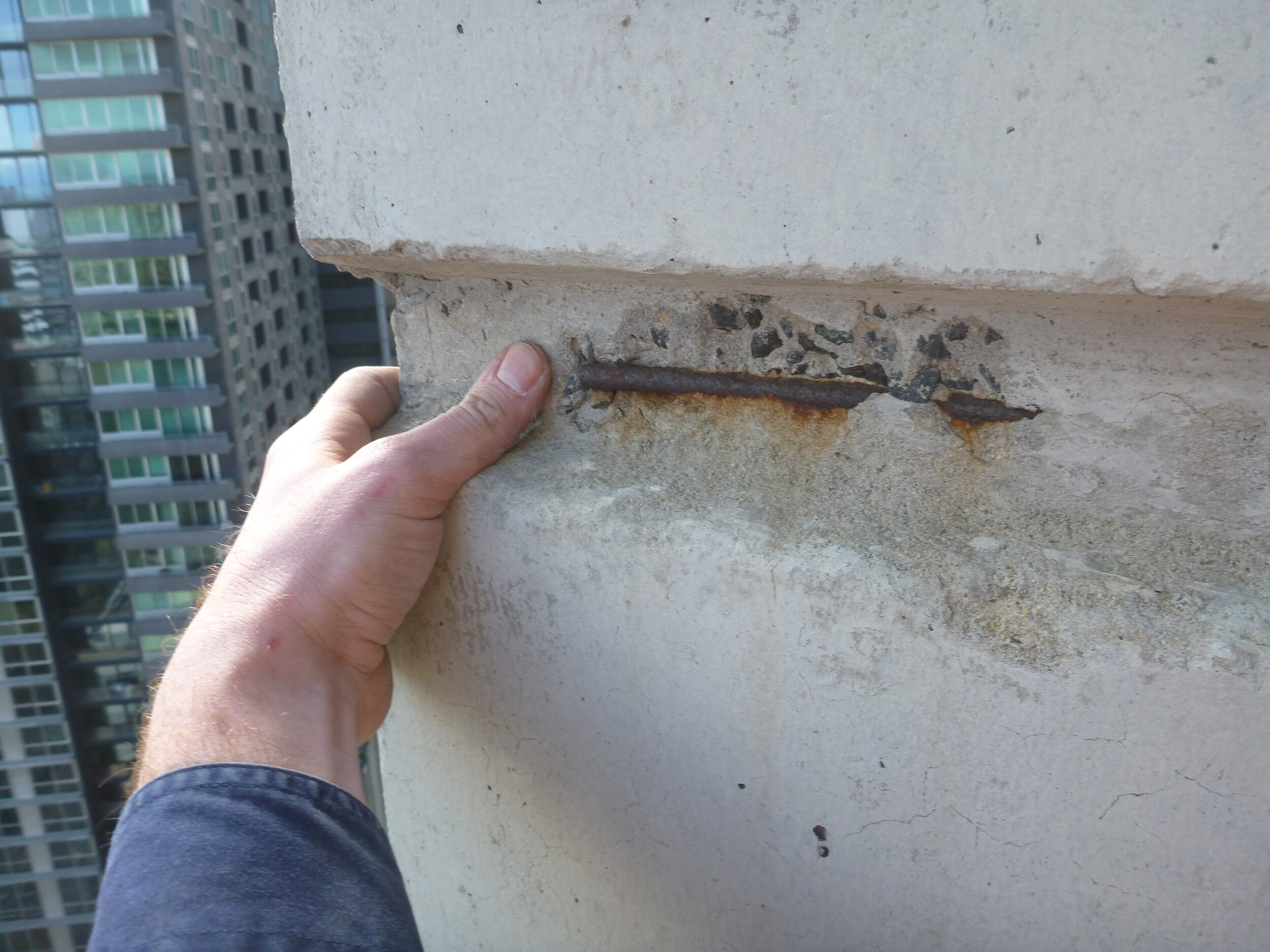595 COLLINS STREET, MELBOURNE
595 Collins Street façade during assessment.
The concrete cover to reinforcement had been significantly reduced due to the presence of architectural false joints.
Façade repair works (including installation of galvanic anodes) were conducted via swing stage.
Finished façade with installation of galvanic anodes and anti-carbonation coating to maintain aesthetic appearance.
595 Collins Street, Melbourne
Infracorr Consulting Pty Ltd (Infracorr) was engaged to conduct a condition assessment of the roof parapets, façade and sealant of the 30 year old commercial property at 595 Collins Street, Melbourne. The investigation was undertaken via roped access and focussed on qualification of the typical defects, including photographs and advice regarding the likely causes of the deterioration. During the initial investigation, an extensive deterioration risk was identified that required a complex solution.
PROJECT HIGHLIGHTS
• Roped access condition assessment of 30 year old CBD
high rise commercial building.
• Identified extensive, systemic corrosion risk across the building facade due to low cover reinforcement.
• Prepared a detailed technical specification for repairs, including installation of galvanic anodes and application of anti-carbonation coating to mitigate corrosion risk, as well as preventative maintenance approach for other defects.
• Provided technical support throughout the tender process and construction works, including conducting quality audits of contractors works.
CHALLENGES
• Infracorr’s ropes access trained engineers were supported by an IRATA level 3 rope access technician to provide safe access to as much of the 20 storey building as practically possible.
• The investigation identified an extensive and systemic corrosion risk across the building façade caused by low concrete cover to the reinforcement at the location of architectural false joints.
• Reinforcement cover and concrete carbonation depth were found to vary across the façade, making quantification of remedial works difficult.
The carbonation front had already advanced deeper than reinforcement in some locations and concrete spalling (due to reinforcement corrosion) was occurring. As corrosion initiation had occurred, it was considered likely that a protective anti-carbonation coating alone was insufficient to manage
the risk of further corrosion and resultant concrete spalling.
SOLUTIONS
A comprehensive reinforcement cover
and carbonation survey was conducted, enabling detailed modelling of the corrosion risk across the façade. This analysis
estimated approximately 5,000 locations
where reinforcement crossing the false
joints were affected, requiring repair or preventative maintenance works.
A number of remedial approaches were identified and presented to the building owner. These included:
• Regular, ongoing concrete make safe repairs and continued monitoring; and
• Comprehensive remedial works to address the underlying reinforcement corrosion risk.
A robust solution which involved the
installation of galvanic anodes and application of an anti-carbonation coating, was adopted. This method would enable the building owner to conduct the façade works in a single project, rather than stage repeat works at regular intervals, and provide a maintenance free period of up to 20 years.
• A detailed design and specification for remedial works was produced. The design required the successful contractor to first conduct a full quantification survey to confirm the quantity estimates made during the investigation/analysis.
• Infracorr assisted building owner during the tender process, including preparation of tender documentation and assessment of tender submissions.
• By undertaking a full scan of the building and conducting a 100% survey, the
precise locations of the building that
were deteriorating were identified.
• With full information regarding defect location, the design was refined to minimise the number of anodes required, minimising the cost to complete the works.
• Infracorr conducted quality audits of the anode installation as well as the surface preparation and application of the
anti-carbonation coating, to ensure
the specification was followed.
• Other works were also completed including replacement of joint sealant and repair of the parapet capping to prevent the need
for further remedial programs in the future.
• Clarifying the client’s level of acceptable risk early on, Infracorr’s proposed preventative maintenance approach eliminated the need for additional
works in the future.
• Although conducting the preventative maintenance works had a higher initial cost than only repairing visible spalls, this approach is expected to achieve a lower life cycle cost by eliminating the access costs associated with an annual spall
repair program.





